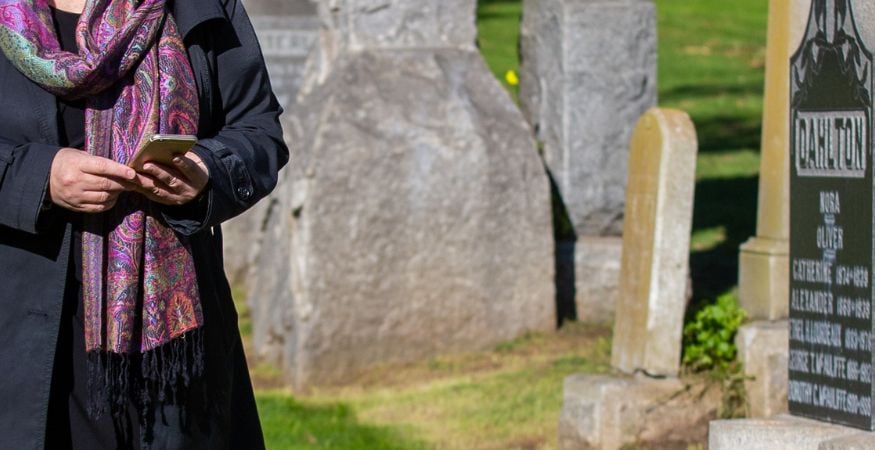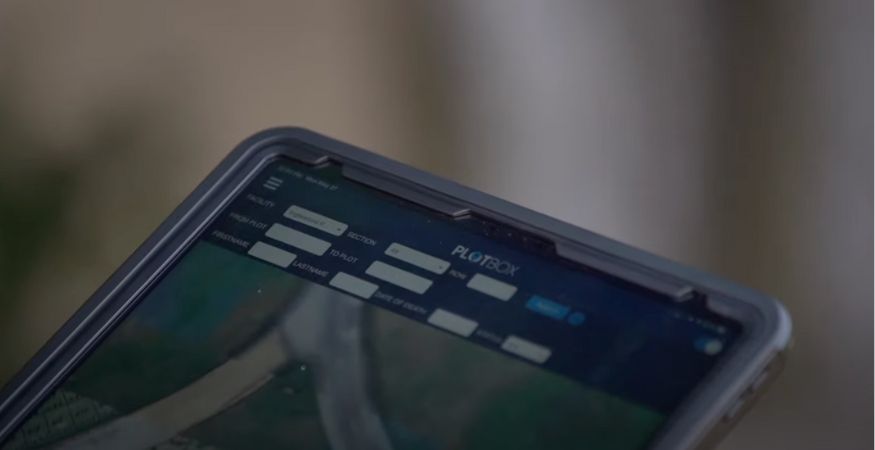| Read time: 5 mins
Cemeteries and crematories are undergoing a transformative shift through the integration of digital mapping technology, bringing a range of quantifiable efficiencies, but arguably, in an industry with empathy and compassion at its core, their real power comes in connecting people with places.
Beyond the myriad of benefits to sales and operational management, cemetery mapping has become a valuable resource in connecting cemeteries to their heritage, families with their loved ones and communities to their history.
In this blog, we look at the ways in which digital cemetery mapping technologies and resources, including public grave search portals, not only foster connections with families, but also enriches the broader community experience.
From family grave searches and historical exploration to interactive educational resources, event hosting, and community-driven projects, digital cemetery mapping is becoming an indispensable tool that resonates beyond the traditional role and physical boundaries of cemeteries and crematories.
Public Grave Search Portals: A Hub for Family Connections
A significant positive outcome of linking digital cemetery mapping with deceased records is the creation of public grave search portals.
These portals, accessible from anywhere at any time online, serve as vital tools in connecting families with their loved ones and their genealogical history. They do this in a number of ways:
Family History Exploration
Families can use the public portal for comprehensive family history searches, uncovering the stories and resting places of family members, transforming the cemetery into a living archive, one that allows them to discover and celebrate their heritage.
Remote Access and Planning
In allowing families to access grave locations remotely, these public portals facilitate pre-visit planning and reduce potential stressors when on-site. In this way, families can plan visits purposefully, optimizing their time within the cemetery grounds for a more streamlined experience.
Inclusive Community Engagement
Public grave search portals also transform into an inclusive online space where community members, whether local or remote, can engage with the cemetery's history and stories, connecting with their heritage, fostering a sense of belonging and shared remembrance within the broader community.
An Interactive Educational Resource: Enriching Engagement
As well as facilitating grave search, digital cemetery mapping can serve as a rich educational tool for the community, fostering a deeper understanding of their local history and cultural heritage - that when linked with other resources effectively turns cemetery spaces into living classrooms that offer a profound understanding of the evolution of societal values, traditions, and historical narratives.
Discovering Hidden Histories
Educational tours facilitated by digital cemetery maps can provide a platform to unearth hidden histories within the cemetery, bringing attention to less-known graves and the stories of individuals who might have played pivotal roles in the community's development; for instance, a gravesite marked by unique symbols or an unassuming headstone holding the key to unraveling a fascinating chapter in local history.
Architectural Narratives
Similarly, architectural elements present in cemetery structures and tombstones offer insights into the cultural influences and artistic preferences of the community throughout different eras. Exploring the evolution of tombstone styles, from elaborate Victorian designs to minimalist contemporary structures, becomes a visual journey reflecting changing societal aesthetics.
Celebrating Diversity
Cemetery mapping can also facilitate interactive tours that showcase the diverse cultural influences within a community, celebrating the mosaic of backgrounds and traditions that contribute to its identity - for example, sections dedicated to specific ethnic or religious groups might display unique burial practices, emphasizing the rich cultural diversity embedded in the community's history.
Educational Engagement for All Ages
Educational tours aren't limited to a specific age group; they serve as inclusive platforms for learners of all ages, with schools potentially integrating virtual cemetery tours into lessons, creating educational modules that transform history lessons into interactive experiences for students, while families, too, can participate, ensuring that learning becomes a lifelong journey.
Lifelong Learning and Continuous Discovery
The educational aspect of cemetery mapping extends beyond scheduled tours; it becomes a lifelong learning resource accessible to the community, facilitating virtual tours, that may even be used in conjunction with informative videos, and interactive features, allowing individuals to continue their exploration and discovery of cultural evolution at their own pace - wether at home or at a specially designed hub within the cemetery space.

Examples in Action:
Imagine a guided tour highlighting the resting places of prominent community figures, each with a unique story that contributed to the area's growth, coupled with interactive displays on the history of burial practices, showcasing the evolution from traditional burials to contemporary practices, providing a comprehensive understanding of societal changes.
Workshops conducted within cemeteries, engaging participants in activities like gravestone rubbings, symbol decoding, or even simulated archaeological digs, creating immersive and hands-on learning experiences.
The educational dimension of cemetery mapping goes beyond conveying facts; it invites communities to explore, question, and engage with their cultural heritage. By fostering a deeper connection to burial practices, cemetery mapping transforms these spaces into vibrant hubs for learning. As educational tours become integral components of cemetery engagement, they contribute not only to the preservation of the past but also to the continuous evolution of community understanding and appreciation for its cultural roots.
Event Hosting: Fostering Onsite Connections
Cemeteries are not only spaces for reflection and remembrance, but can also be vibrant, vital hubs for community events, gatherings, and activities that bring people together. And in this way, cemetery mapping can play a pivotal role in facilitating these initiatives, aiding planning and participation, while creating opportunities for engagement.
Maximizing your space
For events to be successful they need to be carefully planned, and that means optimizing the space available. Digital mapping can help by providing a comprehensive visualization of the entire cemetery layout, enabling delineation of communal areas, such as serene gardens or designated gathering spaces, and in doing so, optimizing space and overcoming potential logistical limitations.
By examining the space in this way, each area can be transformed into a canvas for exceptional experiences - now, your event is not merely hosted but thoughtfully curated, its full potential utilized to create an impactful and memorable outcome for visitors.
Interactive Tours
In terms of visitor experiences, by leveraging digital maps, cemeteries can create interactive tours or even events such as scavenger hunts, turning the visit into an engaging and educational experience. Families can explore the cemetery more easily and even participate in activities that encourage teamwork and collaboration.
Seasonal Events and Festivals
Cemeteries can also use digital maps to plan and execute seasonal events and festivals. For example, Halloween celebrations can involve guided tours with appropriately-themed narratives, encouraging families to dress up and participate in organized activities. Similarly, during festive seasons, cemeteries can host cultural events, such as Dia de los Muertos connecting communities to their heritage.
Memorial Events
Memorial days can be some of the busiest, and most reverentially observed days within cemeteries, so again, planning is key. Digital mapping allows for the efficient pre-planning of activities such as flag placement, or the organization of special maintenance projects in advance; while on the day, staff with tablet devices can guide loved ones to specific grave sites, helping to create personalized, streamlined experiences, while fostering a sense of inclusivity and shared remembrance.
Community-Driven Projects
And before you thought there was literally nothing digital cemetery maps couldn’t do, they can also help to facilitate local community members in actively participating in shared projects that contribute to the preservation and enhancement of the cemetery.
On-site conservation initiatives such as grave clearing or cleaning projects can be helped in no small part by maps accessible via mobile devices helping to clearly indicate where work is to be carried out. This collaborative effort can encourage a real sense of ownership and community pride, strengthening the bond between families and the cemetery, helping to encourage volunteers in greater numbers.
So what does all of this tell us? As we navigate that delicate balance between preserving the past and embracing the future, and between remembrance and the creation of vital, living spaces, digital cemetery mapping emerges as a valuable tool.
With the accessibility offered by public grave search portals, handheld devices, and an array of interactive features, cemeteries become not only repositories of memories but living narratives of family connections as well as inclusive connections to their history, and the broader community.
To learn more about the PlotBox Everafter genealogy search portal visit our webpage.
